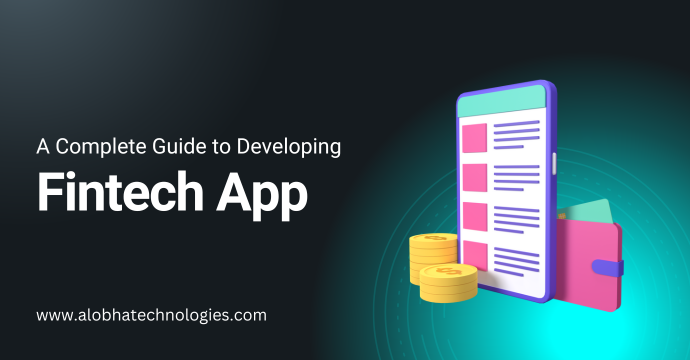
The fintech industry is booming, revolutionizing how we manage finances through innovative technology. If you’re looking to dive into fintech app development, you’re in the right place. This comprehensive guide will walk you through the essential steps, from initial planning to post-launch maintenance, ensuring your fintech app is both successful and sustainable.
What is a Fintech App?
A fintech app, short for financial technology application, is a software application designed to provide financial services through digital means. These apps leverage technology to enhance, streamline, and automate various financial processes for users, ranging from everyday consumers to businesses and financial institutions. It encompasses a wide range of applications including mobile banking, investment apps, blockchain, and more.
Key Features of Fintech App
Key features are designed to ensure security, enhance user experience, and provide comprehensive financial services. Here are the essential features that make a fintech app effective and user-friendly:
- User Authentication and Security: Advanced security measures like biometric authentication (fingerprint, facial recognition), multi-factor authentication (MFA), and encryption are crucial to protect user data and financial transactions.
- User-Friendly Interface: An intuitive and easy-to-navigate interface is essential for enhancing user experience and engagement.
- Real-Time Notifications: Providing users with real-time updates on transactions, account activities, and financial news helps keep them informed and engaged.
- Analytics and Insights: They offer personalized financial insights and analytics to help users make informed decisions about their money.
- Integration with Financial Institutions: Seamless integration with banks, credit unions, and other financial institutions allows users to link their accounts and access a wide range of services within the app.
Read More: Empower Future with an Innovative Mobile App Development
Types of Fintech App
It includes a broad array of financial services and technologies. Here are the main types of fintech apps:
- Mobile Banking Apps: These apps allow users to perform banking transactions such as checking account balances, transferring money, paying bills, and depositing checks through their smartphones.
- Payment Apps: Applications like PayPal, Venmo, and Apple Pay facilitate online and peer-to-peer payments, allowing users to send and receive money digitally.
- Investment Apps: Apps like Robinhood, Acorns, and E*TRADE provides platforms for users to invest in stocks, bonds, ETFs, and other securities. They often include features like automated investing, robo-advisors, and financial education.
- Lending Apps: These apps offer various lending services, including personal loans, payday loans, and peer-to-peer lending. Examples include LendingClub and Prosper.
- Personal Finance Management Apps: Apps such as Mint and YNAB (You Need a Budget) help users track their spending, create budgets, and manage their finances more effectively.
- Cryptocurrency Apps: These apps facilitate the buying, selling, and trading of cryptocurrencies like Bitcoin and Ethereum. Examples include Coinbase and Binance.
- Insurtech Apps: These applications are designed to simplify and enhance the insurance process. They allow users to compare insurance policies, purchase coverage, and manage claims. Examples include Lemonade and Policygenius.
Advantages and Disadvantages of Fintech App
The advantages include convenience and cost efficiency, but they also pose security risks and regulatory challenges, alongside potential privacy concerns and market competition. Balancing the advantages and disadvantages is crucial for the sustainable growth and success of fintech applications.
Advantages
- Convenience: They offer unparalleled convenience by granting users round-the-clock access to financial services, allowing for swift transactions without the need to visit traditional brick-and-mortar branches.
- Cost Efficiency: They provide cost savings by offering lower fees in comparison to traditional financial services. Moreover, they streamline operations through automation and digital processes, resulting in reduced operational expenses.
- Enhanced User Experience: They prioritize user experience with easy-to-navigate interfaces and intuitive designs. Additionally, they offer tailored financial guidance and services to meet individual needs.
- Security: They employ cutting-edge security protocols such as encryption and multi-factor authentication to safeguard user data. They also utilize sophisticated fraud detection algorithms to prevent unauthorized access and fraudulent activities.
Disadvantages
- Security Risks: They face heightened vulnerability to cyber-attacks and hacking, posing a significant risk of compromising sensitive user data through potential data breaches.
- Regulatory Challenges: Navigating intricate and ever-changing financial regulations poses challenges for fintech apps. Additionally, they encounter complexities with varying regulations across international markets.
- User Trust: Establishing trust presents hurdles for fintech apps when compared to well-established financial institutions. Moreover, the lack of human interaction may result in potential dissatisfaction with customer service.
- Financial Exclusion: Access to technology is essential for fintech apps, but not all individuals have it readily available. Furthermore, the complexity of these apps can discourage those who are less tech-savvy from using them.
Conclusion
Fintech apps are transforming the financial industry by making financial services more accessible, efficient, and user-friendly. As technology continues to evolve, the potential for innovation in fintech is immense, promising even more sophisticated and integrated financial solutions for users worldwide.